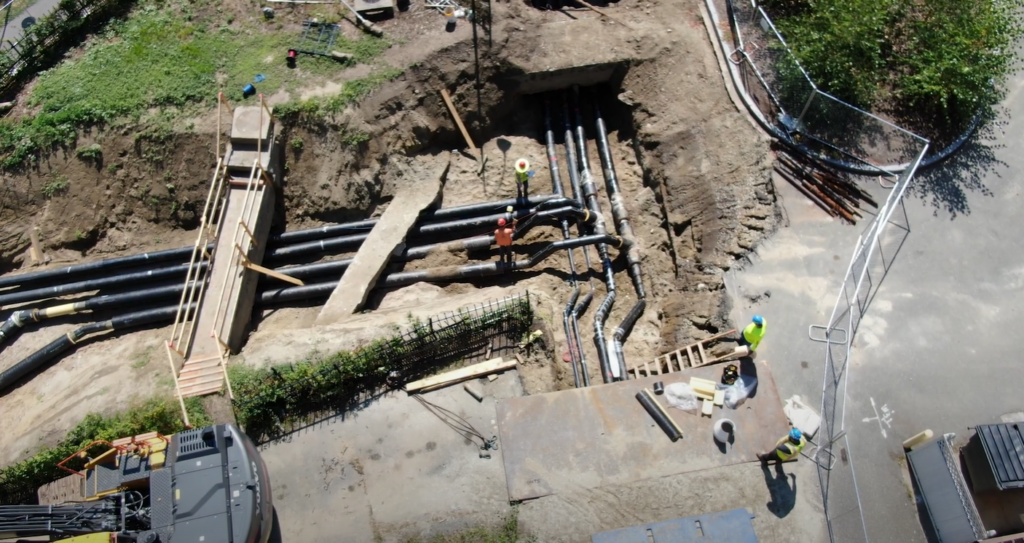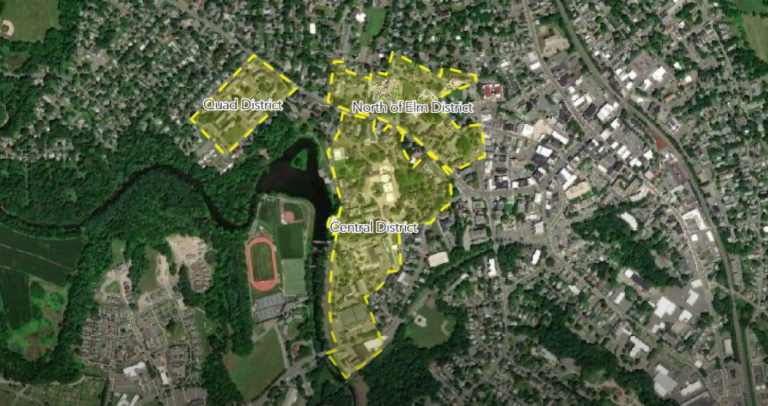 Ongoing work for the geothermal project of Smith College in Northampton, MA (source: YouTube screenshot / Sustainable Smith)
Ongoing work for the geothermal project of Smith College in Northampton, MA (source: YouTube screenshot / Sustainable Smith)The Geothermal Campus Energy Project of Smith College was first announced in 2022 after receiving the approval from the board of trustees to begin construction, although the idea was first conceived in 2016. The geothermal project is expected to be completed by 2028, towards achieving carbon neutrality by 2030. This coincides with the timeline of the net-zero goals of the city of Northampton.
With the project, the Smith College aims to fully move away from fossil fuels for the heating and cooling systems of the campus. The old system has been in place for 80 years, and school hopes that the new system will last just as long, if not longer. It will also make Smith one of only a handful of schools in the USA that have achieved net zero carbon emissions.
About the project
Highlights of the project were presented to visitors at the recent inauguration of President Sarah Willie-LeBreton. A series of wells at a depth of 800 feet (~243 meters) will be drilled and connected in a closed loop. Liquid flowing through the wells will absorb heat from the subsurface which will then be transferred to a central plant. The heat will be extracted either for cooling, or amplified using heat pumps.
The project is divided into three phases, and work on the first phase has already started on the buildings in the North Campus near Henshaw Avenue. This is expected to be completed by spring or summer next year. The second phase will focus on supplying power to buildings around the Smith College Quadrangle on Kensington Avenue, while the final phase will be for the central campus area.

Division of phases of the Smith College geothermal project (source: YouTube screenshot / Sustainable Smith)
Beth Hooker, the school’s director of sustainability, said that the project has also become a learning opportunity for students to study policy implications of the Inflation Reduction Act. Through the IRA, the school seeks federal assistance for the project. Other students are creating digital story maps on the project using GIS.
Carbon offsets are not the solution
Running a heat pump system requires extra electricity, and the school plans to purchase this electricity from off-site solar forms, such as the one located in Farmington, Maine. This way, the school achieves carbon neutrality without buying carbon offsets or using biofuels.
Jim Gray, associate vice president for facilities and operations at Smith, said the the school is unique among higher education institutions by constructing its own geothermal system. “We can’t offset our way out of this problem,” Gray said.
“Most [other colleges] have not taken the paths and actually go to the full extent of creating heating and cooling systems for their campus that themselves are carbon-neutral.”
Gray also expressed appreciation to the community for putting up with the disruption caused by the geothermal project, knowing that it is a long-term investment that will generate savings both in terms of finances and carbon emissions in the future.